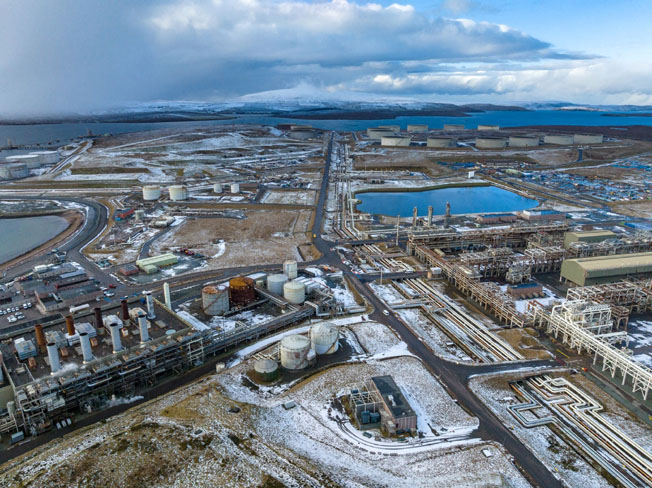Veri Energy today announced the signing of a Memorandum of Understanding (‘MoU’) with Severnside Carbon Capture and Shipping Hub Ltd (‘7CO2’) to explore sending CO2 from the Avonmouth Cluster emitter portfolio to Veri’s merchant carbon storage project being developed at the Sullom Voe Terminal (‘SVT’) in the Shetland Islands.
Under the MoU, Veri would receive shipped CO2 from Avonmouth at our existing port facility at SVT, condition and store the CO2 before sending it via EnQuest’s 100%-owned pipeline to a storage reservoir under the North Sea.
Gavin Templeton, CEO of Veri, said:
“We look forward to working with 7CO2 to provide an alternative competitive merchant Non-Pipeline Transportation (‘NPT’) solution to 7CO2’s existing plans to be part of a DESNZ Track 2 Carbon Capture cluster. This partnership has the potential to help streamline and reduce full cycle carbon capture costs, bring resilience to 7CO2 and its emitter partners and provide an optimum “Value for Money” carbon capture and storage solution."
Veri received four carbon storage licences from the North Sea Transition Authority in May 2023 in the regulator's first UK offshore carbon storage licensing round. These licences incorporate well understood reservoirs in locations which are accessible from our existing infrastructure, including the 200km East of Shetland Pipeline System and the Magnus offshore platform. These four licensed sites include more than 300 million tonnes of total storage capacity, while the existing infrastructure has potential for up to 10 million tonnes per annum of storage, ramping up from as early as 2028/2029.
The strategic location of the Shetland Islands provides Veri with the opportunity to import and store CO2 from isolated emitters in the UK, Europe or further afield.

The Sullom Voe Terminal
The Sullom Voe Terminal ('SVT') complex is operated by Veri Energy's parent company, EnQuest plc, on behalf of a consortium of energy companies. The complex currently receives oil by pipeline from the oilfields in the East Shetland Basin and the deep waters West of Shetland. The oil is exported from Sullom Voe by tanker and shipped worldwide.
The terminal was built between 1975 and 1981 and covers 1,000 acres. Its main purpose has been to act as a buffer between the producing fields offshore and tankers waiting to ship oil to refineries worldwide. The terminal has been designed to allow continuous production offshore, even in bad weather.
The major infrastructure and key features of the site include:
- 1,000 acre footprint
- Four deepwater jetties, with the 24 metre deep port being amongst the deepest in the UK/Europe
- COMAH certified (Control of Major Accident Hazards)
- Brownfield site with advantages in permitting and speed to develop new energy/decarbonization projects
- 300+ skilled workforce
- Multi-gigawatt onshore and offshore wind potential
- Multiple pipelines connecting producing fields and export gas routes to UK mainland.
- Strategic location with access to UK/European markets and potentially global
- Crude oil is stored in sixteen conventional floating roof storage tanks
As operator, Veri Energy's parent EnQuest oversees the strategic development of the Terminal and has worked to identify new energy and decarbonisation projects, leading to the launch of Veri Energy.
KeyFacts Energy: EnQuest UK country profile
 KEYFACT Energy
KEYFACT Energy